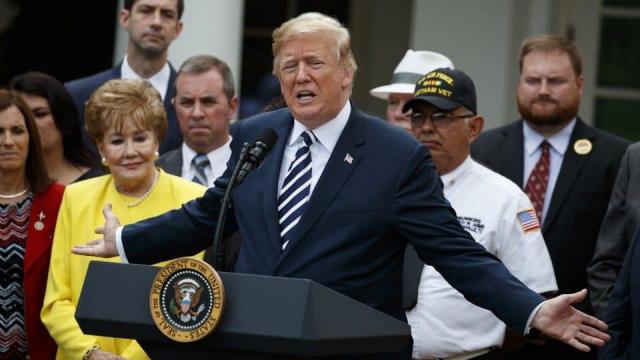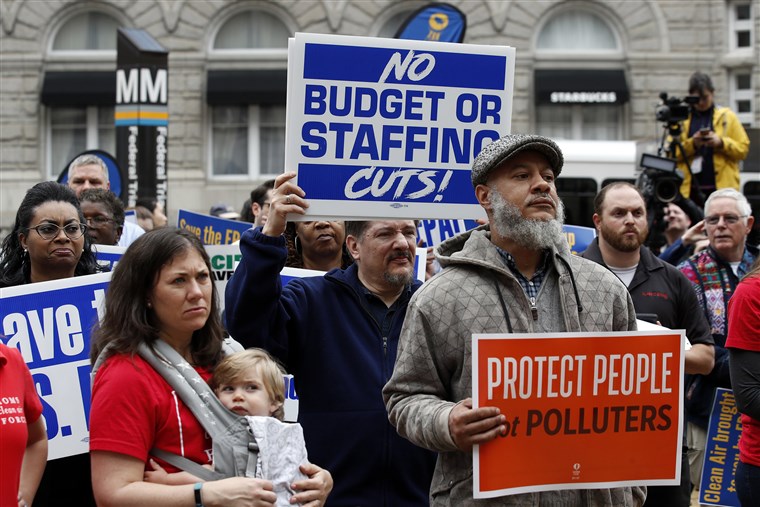
Federal government employee unions celebrated a legal victory on Aug. 25 in a lawsuit brought against the Trump Administration after a U.S. District Court overturned many of the provisions of a May 25 executive order regarding public employee unions.
“President Trump’s illegal action was a direct assault on the legal rights and protections that Congress specifically guaranteed to the public-sector employees across this country who keep our federal government running every single day,” J. David Cox Sr., the national president of the American Federation of Government Employees (AFGE), said Saturday in a press release.
Judge Ketanji Brown Jackson wrote that Trump had “exceeded his authority” when issuing the executive orders, and "this Court has concluded that many of the challenged provisions of the Orders at issue here effectively reduce the scope of the right to bargain collectively as Congress has crafted it, or impair the ability of agency officials to bargain in good faith as Congress has directed, and therefore cannot be sustained.”
AFGE filed suit on May 28 to prevent three executive orders issued three days prior from being implemented. Rationalizing the orders at the time, Trump said they were intended “to empower our civil servants to best help others, [because] the government must always operate more efficiently and more securely.”
But what the order reflected most was the conservative ideology that unions are essentially a hindrance to economic efficiency, prosperity and growth. Traditional conservative positions have included “right-to-work” and abolishing a federal minimum wage. The 2016 Republican platform included these provisions as well as those in the executive orders.
The first executive order creates the Labor Relations Group, a body made up of Trump-appointed officials to oversee negotiations with the union for the purposes of “negotiating better union contracts in a more efficient and transparent manner,” according to the Trump Administration.
The second executive order expedites the removal of poor performing employees. The Trump Administration contends it can take up to a year to remove a poor performing employee and that employees who have stolen agency property, run personal businesses from work, and been arrested for using drugs during lunch breaks have not been fired.
“No one is advocating keeping someone who can’t or won’t do the job,” AFGE Deputy General Counsel Cathie McQuiston told Occupy.com. “The [executive order] is peeling away protection for workers. It undermines due process leading to abuse, for example, retaliating against whistle blowers.”
In her ruling, Judge Brown Jackson found Trump’s exercise of power to be valid, yet also made clear that any provisions implemented must fall under the realm of federal labor law.
The third executive order effectively prohibits federal employees from undertaking more than one hour a day of taxpayer-supported union business.
“They make it sound like we came in with baseball bats and demanded it,” added McQuiston. “The agencies agreed to it because it makes it more efficient to communicate with the unions.”
Under a 1978 federal law, employees are allowed to negotiate collective bargaining agreements during work hours. Under other laws, federal employees are prohibited from striking and engaging in political activity at work.
In 1981, more than 12,000 members of the federally employed Professional Air Traffic Controllers Organization walked off the job. When they failed to return within 48 hours, President Ronald Reagan fired them. A few months later, the Federal Labor Relations Authority decertified PATCO. Not until 1987 would the FLRA recognize the new union created in the wake of the strike.
In 2017, about 10 percent of employed workers belonged to a union – less than half the number who belonged to one in 1983, according to Bureau of Labor Statistics.
AFGE represents 700,000 workers in the federal government and those employed in the District of Columbia. Due paying membership is voluntary.
AFGE’s suit consolidated with more than a dozen other federal employee union suits against the Trump Administration. A bi-partisan congressional group filed an amicus brief with the U.S. District Court in Washington D.C. in favor of the union’s position on July 2.
The U.S. Justice Department stated it is reviewing the decision before deciding its next course of action.












